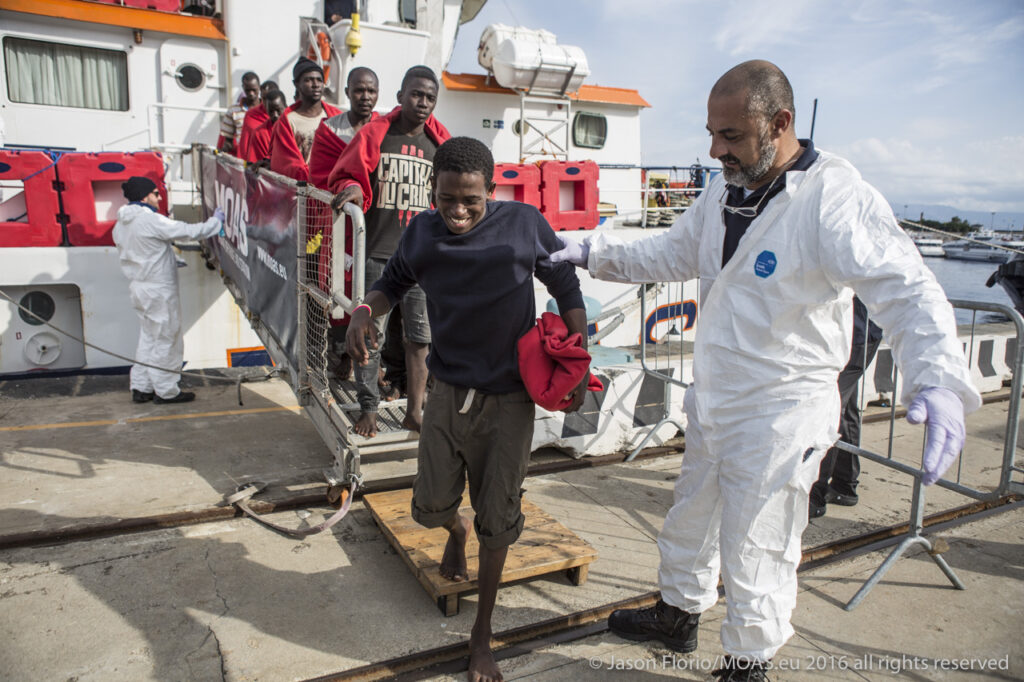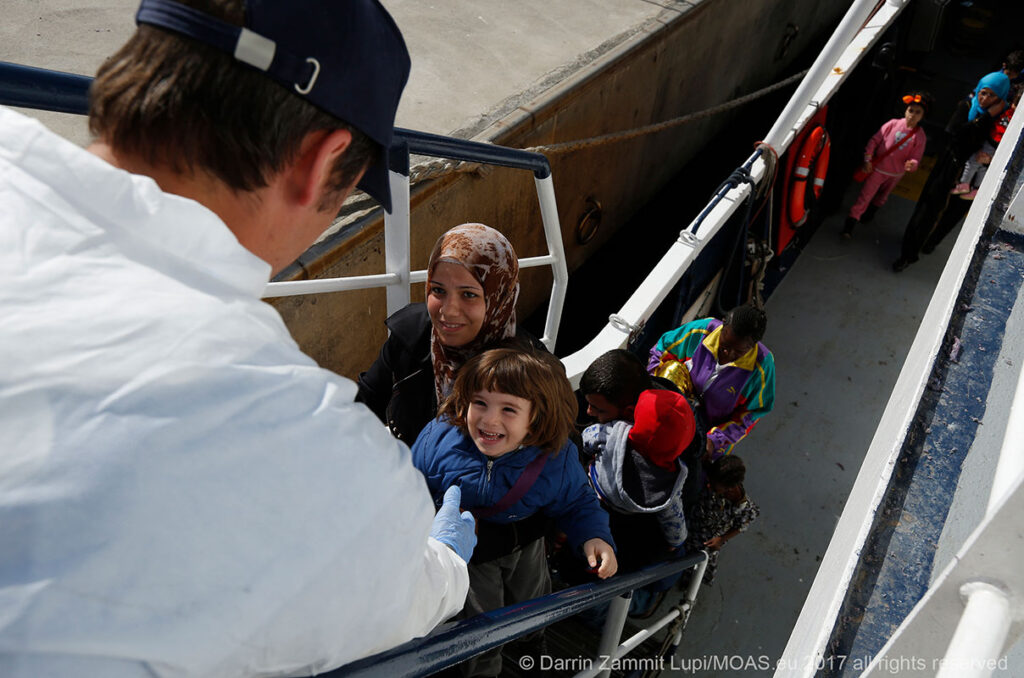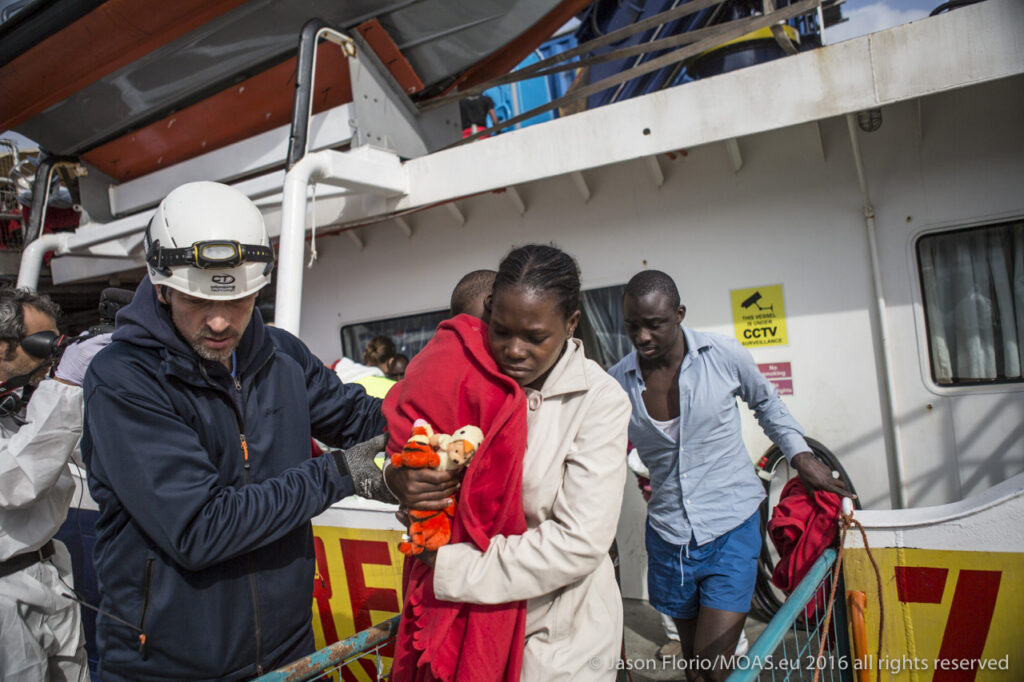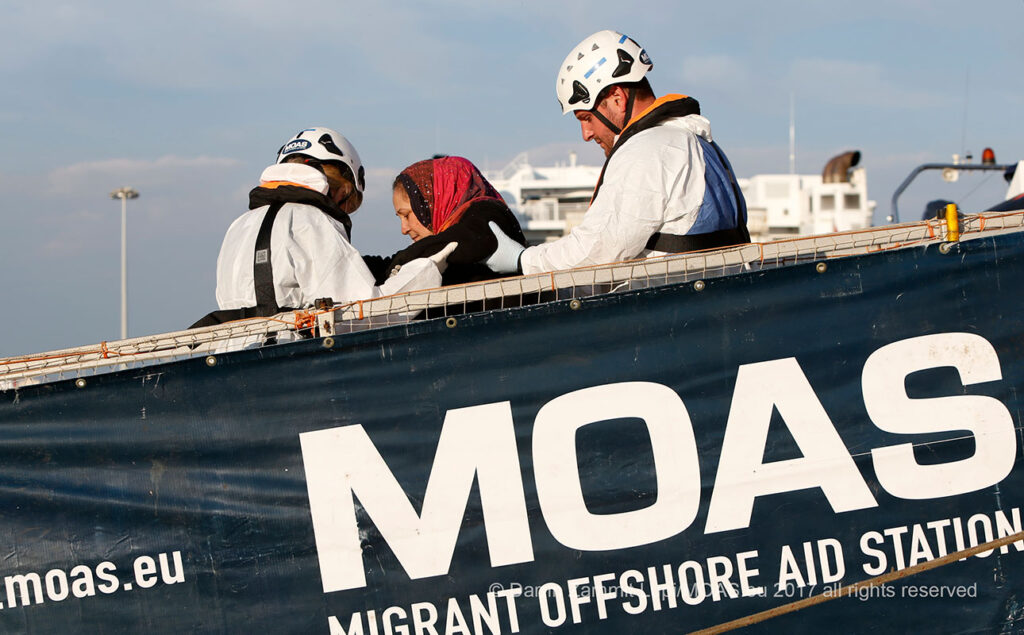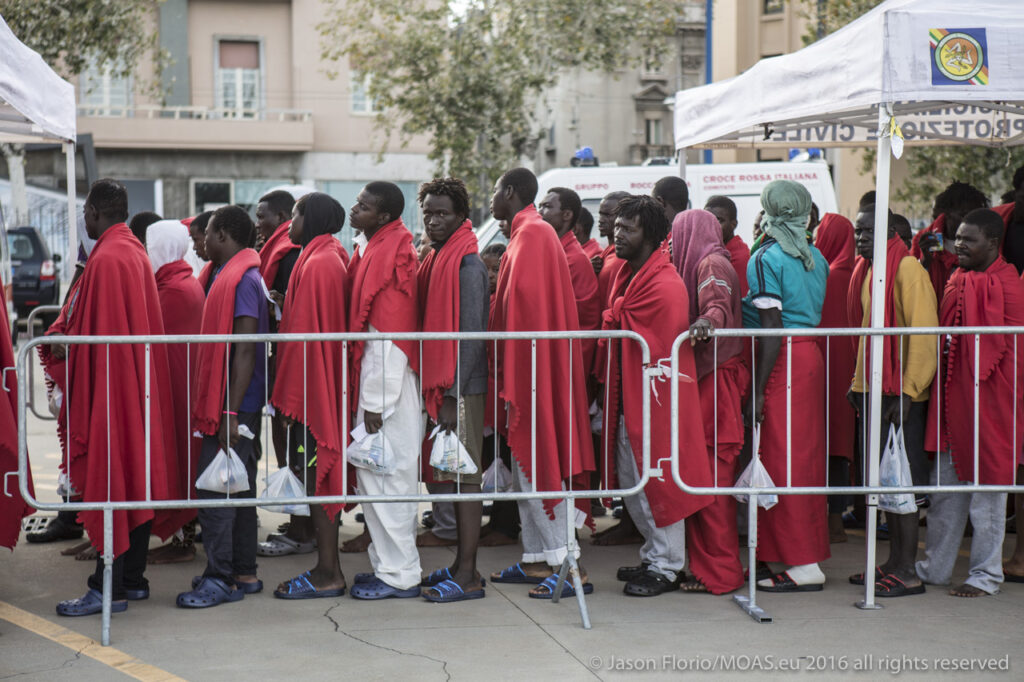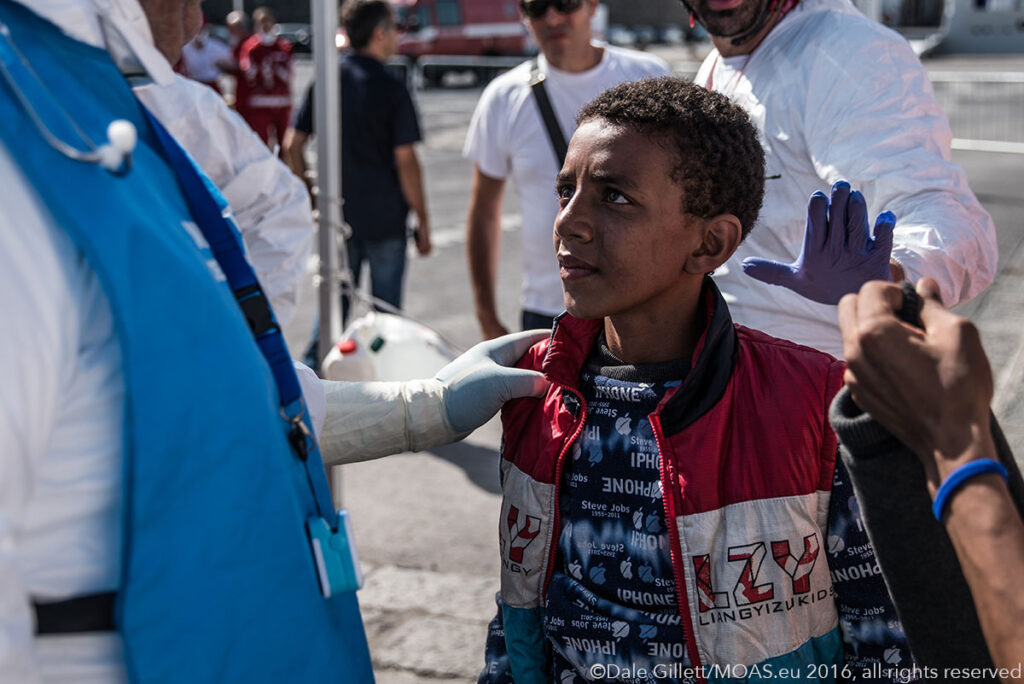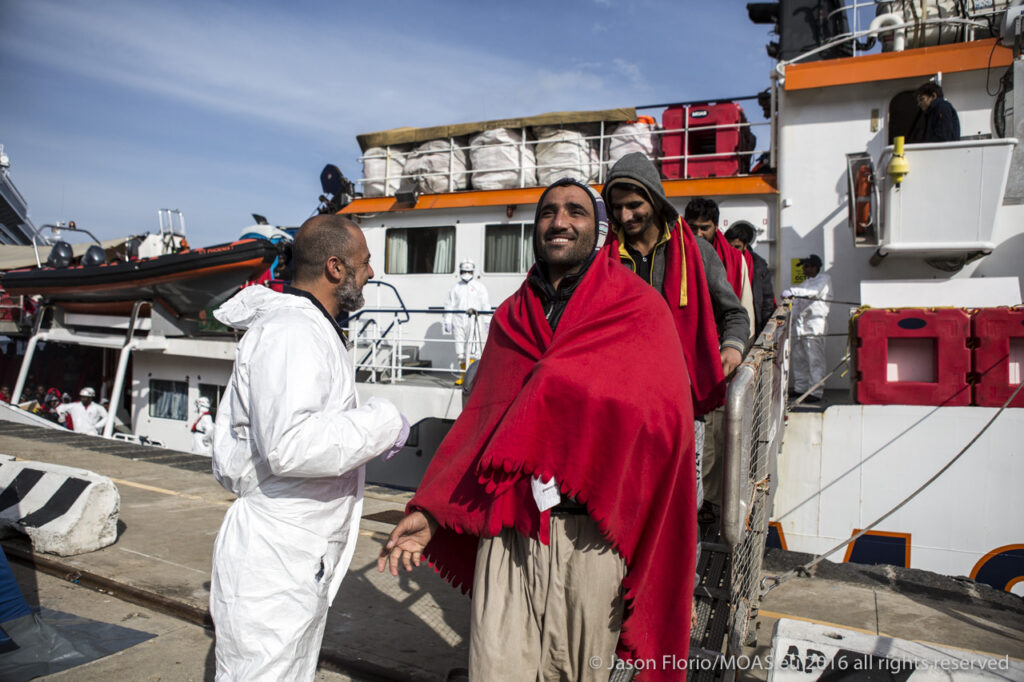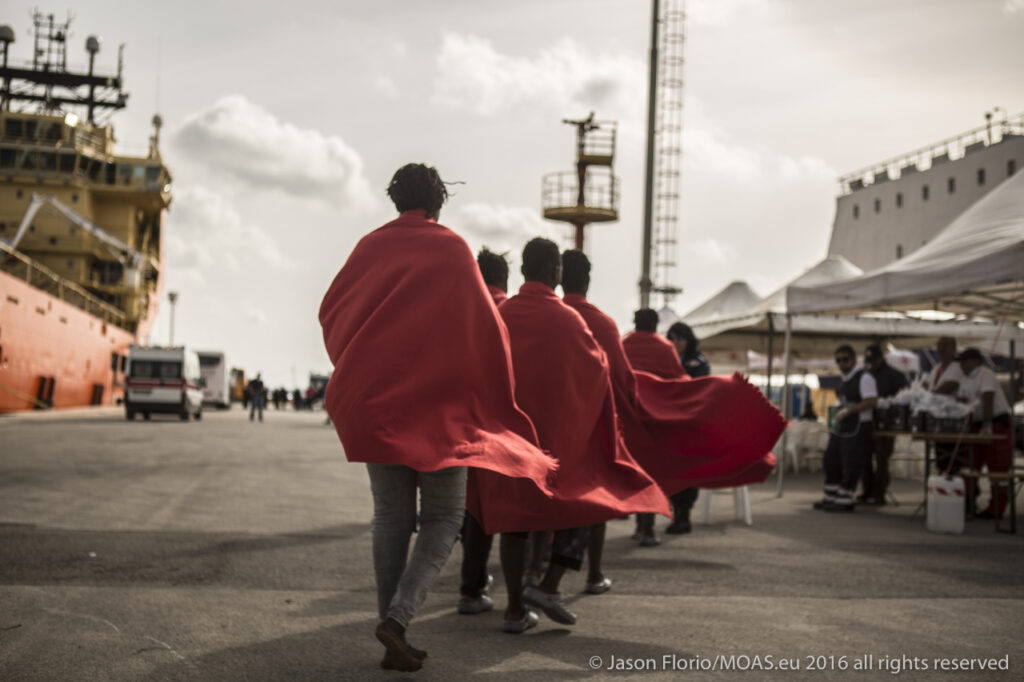Following the first three chapters of our ‘SAR Mission Up-Close’ series this month, today’s chapter focuses disembarkation, followed by a brief overview of the challenges that people face once they start their life in Europe.
Disembarkation in Italy
Once a rescue has been conducted and the people we have rescued are safely on board and receiving post-rescue care, our crew will wait for instructions from the Maritime Rescue Coordination Centre (MRCC) in Rome. As the Italian authorities have assumed the responsibility for the SAR zone, the MRCC will instruct the Phoenix to head to a designated port in Italy.
The length of the journey depends on the allocated port; we have had journeys of up to 70 hours with over 400 people on board. Disembarkations occur during working hours, so if we happen to reach the port during night-time, we will be required to stay at a distance until the next day. As we arrive to the port, there are teams in place to welcome us: emergency medical care professionals, members of the Polizia Scientifica, ambulances and other entities will be working together to make the disembarkation as smooth as possible.
As we arrive to the port, we raise a yellow flag: this signals that the vessel hasn’t been inspected for health and contamination risks. Medical professionals will then inspect the Phoenix, and check that we are not putting anyone at risk by disembarking the people on board: once we have their go ahead, the yellow flag comes down and the disembarkation can begin.
People will be disembarked in small groups: medical emergencies, unaccompanied minors and families will disembark first. They will be given a quick medical check and emergency provisions, including shoes and clothes where needed, by the port-side NGOs and authorities. The police will then take their identification picture and move them to reception centres where further administrative and health procedures can take place.
“It’s difficult but when we take the people on the boat and when we bring them to Italy, it’s totally different. You see the difference in their eyes, they’re like a Phoenix.”
(Igor, SAR Crew Member)
Life after Rescue
Whether they remain in Italy or head to other places in Europe, after people disembark from our vessel and our no longer in our care, they will face new challenges. People will have the opportunity to submit an asylum request with the Italian authorities, and if their application is successful they will receive refugee status or another form of humanitarian protection. They may also try to reach other places in Europe, often in order to join family members.
Despite the obstacles and the often negative discourse that has surrounded refugees in Europe, there have been several demonstrations of support from civil society. Palermo’s mayor, Leoluca Orlando, has recently begun the mission of challenging “the EU to allow freedom of movement for migrants by offering Palermo as a blueprint for other cities trying to integrate migrant populations” (The Guardian Online). All sorts of initiatives have been created across Europe to promote the welcome and integration of refugees, whether on a small or large scale.
While there are many positive initiatives currently being undertaken to help refugees feel at home in their new communities, so many are still fleeing violence, poverty and persecution in their home and transit countries. As long as no safe and legal routes are established, people will continue to attempt the perilous Mediterranean crossing. Against this backdrop, the MOAS crews will continue to rescue and assist as many people as they can, and hope that one day they are able to finally find safety and peace.
Please sign up to our newsletter at the bottom of this page for all the MOAS news and updates and support our rescue missions by giving whatever you can to help us save lives at sea.
This project has been funded with support from the European Commission. This publication reflects the views only of the author, and the Commission cannot be held responsible for any use which may be made of the information contained.

